Archaeology of Asia Stream 2022-2023
The Archaeology of Asia Stream will not be offered in 2022/23.
Dr Anke Hein will be on research sabbatical in 2022/23 and not available to teach or offer MSc Archaeology dissertation supervision.
Please consider the other streams on offer, and staff research profiles, to see if another stream may be of interest in 2022/23.
The ‘Emergence of Farming in Western Asia’ module will be offered in the Prehistory and Pre-colonial Archaeology and the Environmental Archaeology streams.
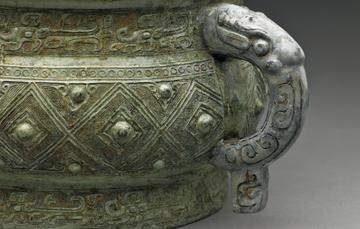
This stream focuses on the archaeology of Asia, with a particular focus on China from the Palaeolithic to the Qing dynasty. Students will have the opportunity to engage with traditional and new research methods and approaches in order to analyse archaeological evidence and practice, and the major cultural developments in the region that had far-reaching impacts.
Your taught modules and independent research will allow you to deepen your knowledge and understanding of archaeological perspectives on a range of themes, from social connectivity and human-environment interaction, to the innovation of ceramic production and trade.
The small-group teaching and learning provides you with the opportunity to explore key sources of evidence and approaches in order to investigate and debate a wide range of subjects, such as:
- craft production and trade
- ceramic production and specialisation
- mortuary archaeology
- emergence of agriculture
- settlement archaeology
- early cities and urbanization
- development of writing
- political unification
- history of archaeology in China
- archaeological theory and Chinese archaeology
- environmental archaeology
Students also benefit from the Oxford Centre of Asian Archaeology, Art and Culture (OCAAAC) in the School of Archaeology. This is an organization that fosters academic exchange, innovative research and specialized training in the fields of archaeology, art history and cultural heritage in continental Asia.
You will take one module from List A, and one or two from List B. You will also take the Archaeological Principles module, and complete a 15,000-word dissertation on a stream-related topic.
If you take only one stream module from List B below, you will take another module offered from either: List B in any other stream*; the MSt in Classical Archaeology*; or a subject from the MSc in Archaeological Science*.
*Not all offered every year
List A (Assessed by Written Examination)
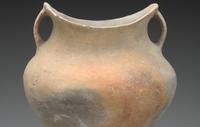
This course provides a survey of the archaeology of Ancient China from the Palaeolithic to the middle Bronze Age. Each lecture is arranged around a particular set of questions as well as a time period and/or region. In this fashion, this course explores the major cultural developments, focusing on the most important finds in greater detail, while at the same time discussing general archaeological questions and approaches.
The class commences by providing an overview of the environmental back ground as well as the history and organizational structure of archaeological work in China. After setting the stage in this fashion, the course will proceed chronologically, simultaneously covering questions of the emergence of agriculture, settlement patterns, burial practices, beliefs and ritual, complex societies, and early cities.
Module Co-ordinator: Dr. Anke Hein
List B (Assessed by two 5000-Word Essays)
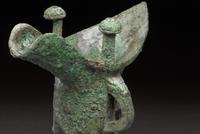
This course provides a survey of the archaeology of Ancient China from the Shang to the Qin Period (c. 16,000-208 BC). Each lecture is arranged around a particular set of questions as well as a time period and/or region. In this fashion, this course explores the major cultural developments, focusing on the most important finds in greater detail, while at the same time discussing general archaeological questions and approaches.
The course will proceed chronologically, simultaneously covering questions of the settlement patterns, burial practices, beliefs and ritual, complex societies, craft production, development of writing, urbanization, and finally political unification.
For students within the stream of Asian Archaeology, taking Chinese Archaeology I is a prerequisite, but for students from other streams this prerequisite does not apply.
Module Co-ordinator: Dr. Anke Hein
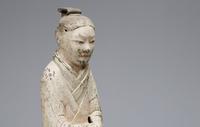
The tendency, even today, to refer to high quality translucent white wares as ‘china’ harks back to a period where this rarefied material was only obtainable from the East. Yet, the production of Chinese porcelain, with all its global impact, is only one late episode in a complex social relationship between humans and clay that
stretches back almost 20,000 years. This course focusses on the emergence and development of ceramics in prehistoric and historic China, providing both general training in ceramic analysis and the specific context needed by students wishing to specialize in the study of Eastern Asia.
From the first modern archaeological excavations in China—which uncovered remarkable prehistoric assemblages of elaborately painted earthenware—to long-standing research on Imperial kiln sites and the recent discovery of the earliest pottery in the world, archaeological ceramics research has played an important part in uncovering China’s past. Traditional archaeological approaches will, therefore, form the foundations of the course. However, students will also be shown how archaeological interpretations of pottery in the past can be shaped within frameworks drawn from ethnographic, ethnoarchaeological, and historical research. In addition, by connecting Archaeological Materials component of the MSt course, students will be given a general introduction to suitable techniques for the analysis of both high- and low-fired ceramics.
The course will introduce China’s early relationship ceramics and consider how geography and climate help us to contextualize early finds and understand the character of later production. Focusing on concrete examples from the Chinese Neolithic to the Qing Dynasty, the course will show how ceramics can help us to explore innovation, specialization and centralization in production, to both define and transgress the boundaries of cultural units, and to investigate the character of long-distance exchange.
Module Co-ordinator: Dr. Anke Hein
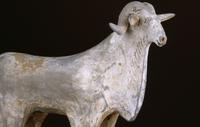
The forests, grasslands, and deserts of Eurasia create an ecological corridor across the northern half of the continent, bridging an apparent divide between East and West. Understanding the patterns of social connectivity, mobility, and human-environment interaction in this region is currently a major focus of interdisciplinary research.
Addressing itself to students seeking a broader context for developments in China, Europe or the Classical world, this course introduces the archaeology of northern Eurasia from the beginning of the Holocene to the rise of the first nomadic empires. It explores the transformation of Eurasian societies, the transmission of technologies and ideas, and the challenges of working between grand narratives and archaeological realities.
Module Co-ordinator: Dr. Anke Hein and Prof. Rick Schulting
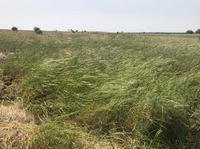
This module presents the latest (bio)archaeological research into the origins and establishment of agriculture in western Asia, focussing on the Epipalaeolithic-Neolithic but also considering case studies from subsequent periods to illustrate the long-term development of farming. Through lectures, tutorials and museum-based classes we set out the chronological and material culture framework to assess the direct archaeobotanical and archaeozoological evidence for domestication relationships and management ecology in different ecological settings and through time. Geographically we focus not only on the ‘Fertile Crescent’ (the arc of relatively high rainfall extending from the southern Levant in the south-west through Syria, SE Turkey and N Iraq in its central zone and down through the Zagros mountains of Iran in the east) but also on adjacent regions (e.g. central Anatolia) that are proving equally important to the origins story and/or to its longer term consequences.'
Module Co-ordinator: Prof. Amy Bogaard and Dr. Mike Charles
Previous Dissertation/Essay Titles
- Identities in Felt and Woven Wool: Materiality Based Approaches to Bronze Age Textiles from Xinjiang, Uyghur Autonomous Region
- Walls for war? A comparative and multi-faceted approach to the function of walls in Neolithic China
- The comparative analysis of the tombs of Nanyue Kingdom - using Guangdong and Guangxi as examples
- Majiayao, Qijia, and Xindian: Changes in Ceramic Production from the Neolithic through the Middle Bronze Age
- Animal-human relationships in the Mongolian Altai: a view from the petroglyph complex Tsagaan Salaa/Baga Oigor
Please note that the modules and streams listed on this website are indicative of the typical offerings and are subject to review each year. Whilst every effort is made to offer the full variety of modules/streams this is not possible to do every year. This is due to the fact that some modules/streams are dependent on student numbers to ensure an appropriate quality of education; timetable clashes; staff availability; etc. We aim to keep the website as up-to-date as possible but we recommend that you seek specific advice from pgt-support@arch.ox.ac.uk on module/stream availability.



